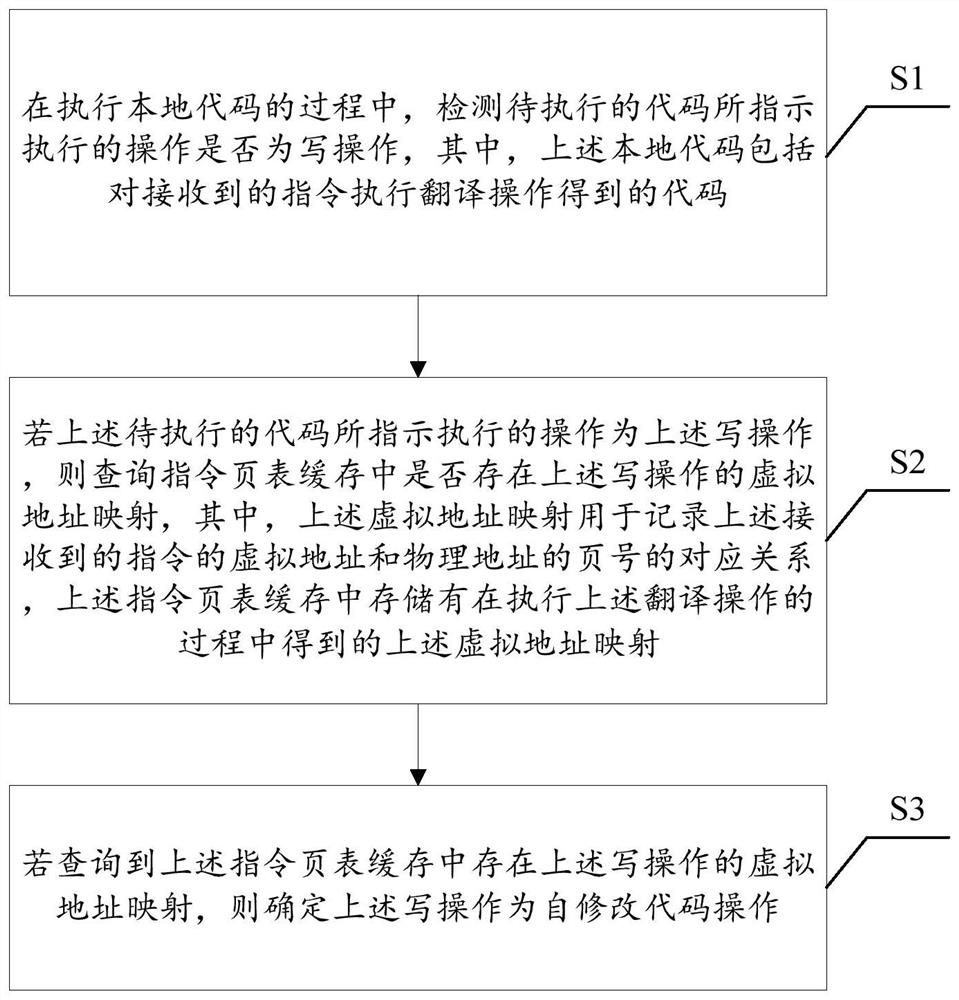Self-modifying code detection method and device based on binary translation
A code detection and self-modification technology, applied in the computer field, can solve the problem of low performance of self-modification code detection and achieve the effect of improving efficiency
- Summary
- Abstract
- Description
- Claims
- Application Information
AI Technical Summary
Problems solved by technology
Method used
Image
Examples
Embodiment Construction
[0021] The present invention will be further described below in conjunction with the accompanying drawings and specific embodiments. It should be pointed out that, in the case of no conflict, the embodiments in the present application and the features in the embodiments can be combined with each other.
[0022] TLB: Translation lookaside buffer, that is, bypass translation buffer, or page table cache; it stores some page table files (virtual address to physical address conversion table). The TLB is a small, virtually addressed cache in which each line holds a block consisting of a single PTE (Page Table Entry). If there is no TLB, each data fetch requires two accesses to the memory, that is, look up the page table to obtain the physical address and fetch the data.
[0023] figure 1 is a flowchart of a binary translation self-modifying code detection method according to an optional embodiment of the present invention, such as figure 1 As shown, the method includes the follow...
PUM
 Login to View More
Login to View More Abstract
Description
Claims
Application Information
 Login to View More
Login to View More - R&D
- Intellectual Property
- Life Sciences
- Materials
- Tech Scout
- Unparalleled Data Quality
- Higher Quality Content
- 60% Fewer Hallucinations
Browse by: Latest US Patents, China's latest patents, Technical Efficacy Thesaurus, Application Domain, Technology Topic, Popular Technical Reports.
© 2025 PatSnap. All rights reserved.Legal|Privacy policy|Modern Slavery Act Transparency Statement|Sitemap|About US| Contact US: help@patsnap.com



